 W
WUSS Allendale (APA-127) was a Haskell-class attack transport of the US Navy. She was built and used during World War II. She was of the VC2-S-AP5 Victory ship design type. Allendale was named for Allendale County, South Carolina.
 W
WUSS Beaufort (AK-6) was a cargo ship acquired by the U.S. Navy for service in World War I.
 W
WUSS Beaufort (ATS-2) was an Edenton-class salvage and rescue ship acquired by the U.S. Navy in 1972 and maintained in service until struck in 1996. Beaufort spent her entire career in the Pacific Ocean, based out of Pearl Harbor and then Sasebo, Japan, and provided salvage and rescue services where needed from the Western Pacific to the North Pacific.
 W
WUSS Beaufort (PF-59) was a Tacoma-class frigate acquired by the United States Navy during World War II. Although she was designed as a patrol craft, she was reconfigured and employed as a weather station ship in the North Atlantic Ocean. Beaufort's task was to launch weather balloons and transmit weather data via radio to her shore-based commanders.
 W
WUSS Berkeley County (LST-279) was an LST-1-class tank landing ship built for the United States Navy during World War II. Named for counties in South Carolina and West Virginia, she was the only U.S. Naval vessel to bear the name.
 W
WUSS LST-519 was an LST-491-class tank landing ship built for the U.S. Navy in World War II. She was later renamed USS Calhoun County (LST-519 after counties in eleven states in the United States
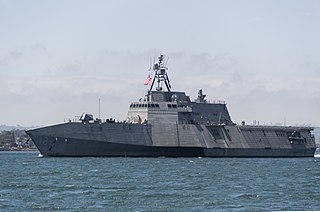 W
WUSS Charleston (LCS-18) is an Independence-class littoral combat ship of the United States Navy. She is the sixth ship to be named for Charleston, the oldest and largest city in the U.S. state of South Carolina.
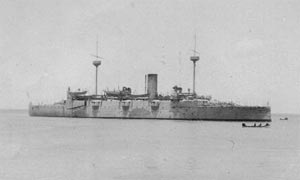 W
WThe second USS Charleston (C-2) was a United States Navy protected cruiser — the fourth US protected cruiser to be built. Lacking experience in building steel cruisers, the design was purchased from the British company Armstrong, Mitchell and Co. of Newcastle, the construction to be by an American shipyard. In design, she succeeded the "ABC" cruisers Atlanta, Boston, and Chicago with better protection, higher speed, and similar armament.
 W
WThe third USS Charleston (C-22/CA-19) was a United States Navy St. Louis-class protected cruiser. She was launched 23 January 1904 by Newport News Shipbuilding and Dry Dock Co., Newport News, Virginia, sponsored by Miss Helen Whaley Rhett, and commissioned on 17 October 1905, Captain Cameron McRae Winslow in command. She was reclassified CA-19 on 17 July 1920.
 W
WUSS Charleston (AKA-113/LKA-113) was an amphibious cargo ship, and was the lead ship of her class in the United States Navy. She was the fifth ship to be named Charleston for Charleston, South Carolina. She served as a commissioned ship for 23 years and 4 months.
 W
WThe Erie class gunboats were a class of gunboats built by the United States prior to World War II. The class was designed in 1932, and commissioned into the United States Navy in 1936: Erie (PG-50) and Charleston (PG-51). The Eries had a design speed of 20 kn and a main armament of four 6-inch (152 mm) guns in single mounts with four 1.1-inch (28 mm) quadruple mount anti-aircraft guns.
 W
WUSS Chesterfield County (LST-551), originally USS LST-551, was an LST-542-class tank landing ship built for the United States Navy during World War II and in commission from 1944 to 1955 and again in the late 1960s. Named after Chesterfield County, South Carolina, and Chesterfield County, Virginia, she has been the only U.S. Navy vessel to bear the name.
 W
WUSS Clarendon (APA-72) was a Gilliam-class attack transport that served with the US Navy during World War II.
 W
WThe first USS Columbia of the United States Navy was a three-masted, wooden-hulled sailing frigate of the US Navy, rated for 50 guns. She was built at Washington Navy Yard. Her keel was laid in 1825, but as was typical of much Navy construction during this period, she was not launched until much later, on 9 March 1836.
 W
WThe fourth USS Columbia (C-12/CA-16) was a protected cruiser in the United States Navy during the Spanish–American War and World War I. She was the lead ship of her class of two cruisers; her sister ship was Minneapolis (C-13). The class was originally designed with three funnels; however, Columbia was built with four and Minneapolis with two. This may have been to make them resemble specific passenger liners.
 W
WUSS Columbia (CL-56) was one of 26 United States Navy Cleveland-class light cruisers completed during or shortly after World War II. The ship, the sixth US Navy ship to bear the name, was named for the city of Columbia, South Carolina. Columbia was commissioned in July 1942, and saw service in several campaigns in the Pacific. Like almost all her sister ships, she was decommissioned shortly after the end of the war, and never saw active service again. Columbia was scrapped in the early 1960s. A memorial to the ship and men who served on her exists in Columbia, SC.
 W
WUSS Columbia (SSN-771), is the 21st flight III, or Improved (688i) Los Angeles-class attack submarine, and is the eighth vessel of the United States Navy to bear that name. The earlier Columbia's were given their names for differing reasons; SSN-771 was specifically named in honor of Columbia, South Carolina, Columbia, Missouri, and Columbia, Illinois.
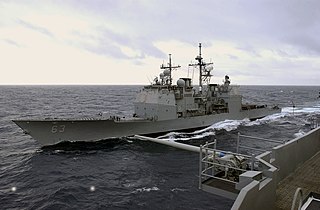 W
WUSS Cowpens (CG-63) is a Ticonderoga-class guided missile cruiser in service with the United States Navy. The ship is named after the Battle of Cowpens, a major American victory near Cowpens, South Carolina, in the American Revolution. She was built at the Bath Iron Works in Maine. Cowpens is stationed at Naval Base San Diego.
 W
WUSS Cowpens (CV-25/CVL-25/AVT-1), nicknamed The Mighty Moo, was an 11,000-ton Independence class light aircraft carrier that served the United States Navy from 1943 to 1947.
 W
WUSS Drayton (DD-366) was a Mahan-class destroyer in the United States Navy before and during World War II. She was the second ship named for Captain Percival Drayton, a career naval officer who served during the American Civil War.
 W
WUSS Enoree (AO-69) was a Chiwawa-class oiler constructed for the United States Navy during World War II. She was the only U.S. Navy ship named for the Enoree River in South Carolina.
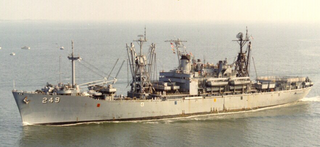 W
WUSS Francis Marion (APA-249) was a Paul Revere-class attack transport of the United States Navy. The ship was launched on 13 February 1954 as Prairie Mariner by the New York Shipbuilding Corp., Camden, New Jersey, sponsored by Mrs. C. A. Wolverton, and delivered on 25 May to the Maritime Administration who operated her until she was placed in the National Defense Reserve Fleet on 6 January 1955.
 W
WUSS Hampton (SSN-767), a Los Angeles-class submarine, is the fourth ship of the United States Navy to bear this name. The earlier Hamptons were given their names for varying reasons, but SSN-767 was specifically named for four cities: Hampton, Virginia; Hampton, Iowa; Hampton, South Carolina; and Hampton, New Hampshire. There are 14 more "Hampton" towns in the United States.
 W
WUSS Haynsworth (DD-700), an Allen M. Sumner-class destroyer, was the only ship of the United States Navy to be named for Commander William M. Haynsworth, Jr., the commander of the Ingraham, when it accidentally collided with Chemung. The resulting collision caused Ingraham's depth charges to explode while still on her stern. The explosion resulted in the loss of the entire crew except for one officer and ten enlisted.
 W
WUSS Ingraham (DD-111) was a Wickes-class destroyer built for the United States Navy during World War I.
 W
WUSS Ingraham (DD-444), a Gleaves-class destroyer, was the second ship of the United States Navy to be named for Captain Duncan Ingraham (1802–1891), who was awarded a Congressional Gold Medal following his actions regarding Martin Koszta, a Hungarian who had declared in New York his intention of becoming an American citizen, and who had been seized and confined in the Austrian ship Hussar.
 W
WUSS Ingraham (DD-694) was a United States Navy Allen M. Sumner-class destroyer, the third ship in U.S. Navy history to be named for Duncan Ingraham. She was in commission from 1944 to 1971. Following her US service, she was sold to the Hellenic Navy and renamed Miaoulis. The ship was sunk as a target in 2001.
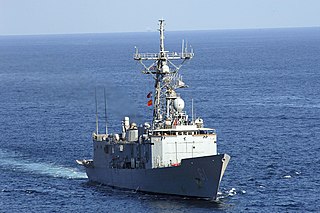 W
WUSS Ingraham (FFG-61), the last American Oliver Hazard Perry-class guided missile frigate to be built, was the fourth ship of the United States Navy to be named for Captain Duncan Ingraham (1802–1891).
 W
WUSS James E. Williams (DDG-95) is an Arleigh Burke-class destroyer in the United States Navy. The ship was named for Boatswain's mate Petty officer first class James Eliott Williams (1930–1999), a River Patrol Boat commander and Medal of Honor recipient from the Vietnam War who is considered to be the most decorated enlisted man in Navy history. As of July 2020 the ship is part of Destroyer Squadron 26 based out of Naval Station Norfolk.
 W
WUSS L. Mendel Rivers (SSN-686), a Sturgeon-class attack submarine in commission from 1975 to 2001, is the only ship of the United States Navy thus far to have been named for L. Mendel Rivers (1905–1970), U.S. Representative from South Carolina's 1st Congressional District (1941–1970).
 W
WUSS Berkeley County (LST-279) was an LST-1-class tank landing ship built for the United States Navy during World War II. Named for counties in South Carolina and West Virginia, she was the only U.S. Naval vessel to bear the name.
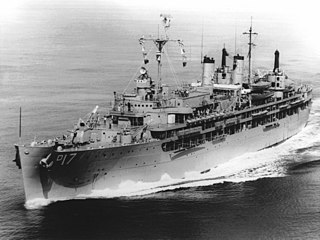 W
WUSS Piedmont (AD–17) was a Dixie-class destroyer tender built during World War II for the United States Navy. Her task was to service destroyers in, or near, battle areas and to keep them fit for duty. She served in the Pacific Ocean during World War II, the Cold War, the Korean War, and the Vietnam War. For her work in battle areas, she was awarded four battle stars for her Korean War efforts and one for Vietnam War service.
 W
WUSS Vicksburg (CG-69) is a Ticonderoga-class guided missile cruiser serving in the United States Navy. She is named for both the land Battle of Vicksburg fought during the American Civil War, and the city of Vicksburg, Mississippi.
 W
WUSS Port Royal (CG-73) is a United States Navy Ticonderoga-class guided missile cruiser, the 27th and final in the class. She is the second U.S. warship to bear the name of two naval battles of Port Royal Sound, South Carolina, of the American Revolutionary War and the American Civil War. At the time of her naming, the Navy designated her as "First ship named" by way of a plaque in the Engineering Control Center, but this was in error as there was a previous ship to bear the name.
 W
WUSS Raymon W. Herndon (APD-121), ex-DE-688, was a United States Navy high-speed transport in commission from 1944 to 1946.
 W
WUSS Richland (AK-207) was an Alamosa-class cargo ship that was constructed for the US Navy during the closing period of World War II. She served in the Pacific Ocean theatre of operations and returned home in 1946, where she was placed into the reserve "mothball" fleet until scrapped in 1972.
 W
WUSS South Carolina (1860) was a steamer used by the Union Navy during the American Civil War.
 W
WUSS South Carolina (BB-26), the lead ship of her class of dreadnought battleships, was the fourth ship of the United States Navy to be named in honor of the eighth state. She was also the first American dreadnought; though she did not incorporate turbine propulsion like HMS Dreadnought, South Carolina's design included revolutionary aspects as well, primarily the superfiring arrangement of her main battery. The ship was laid down in December 1906 and launched in July 1908 before being commissioned into the US Atlantic Fleet in March 1910.
 W
WUSS South Carolina (CGN-37) was the second ship of the California class of nuclear-powered guided missile cruisers in the United States Navy.
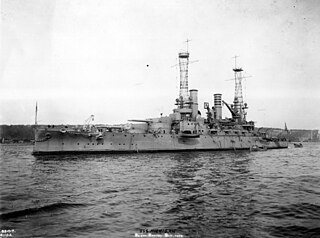 W
WThe South Carolina-class battleships, also known as the Michigan class, were built during the first decade of the twentieth century for the United States Navy. Named South Carolina and Michigan, they were the first American dreadnoughts—powerful warships whose capabilities far outstripped those of the world's older battleships.
 W
WUSS Spartanburg County (LST-1192) was the fourteenth of twenty Newport-class tank landing ships of the United States Navy (USN) which replaced the traditional bow door-design tank landing ships (LSTs). Named after a county in South Carolina, the ship was constructed by National Steel and Shipbuilding Company of San Diego, California. The LST was launched in 1970 and was commissioned in 1971. Assigned to the United States Atlantic Fleet, Spartanburg County deployed regularly to the Caribbean and Mediterranean Seas. In 1983 and 1985, the vessel was present in Lebanese waters. In 1990, the LST was deployed to the Persian Gulf in the Gulf War, returning to the United States in 1991. Spartanburg County was decommissioned and struck from the Naval Vessel Register in 1994.
 W
WUSS Sumter (LST-1181) was the third of twenty Newport-class tank landing ships in service with the United States Navy, which replaced the traditional bow door-design tank landing ships (LSTs). Sumter was constructed by Philadelphia Naval Shipyard in Philadelphia, Pennsylvania and was launched in 1969. The ship entered service in 1970, was assigned to the Pacific coast of the United States and deployed to the western Pacific twice during the Vietnam War. In 1973, Sumter was reassigned to the Atlantic coast and took part in operations in along the Eastern Seaboard of the United States, the Mediterranean Sea and the Caribbean Sea. The LST was decommissioned in 1993.
 W
WUSS Waccamaw (AO-109) was a Cimarron-class replenishment oiler in the United States Navy. She was named after Waccamaw River. The original capacity was 146,000 barrels (23,200 m3).